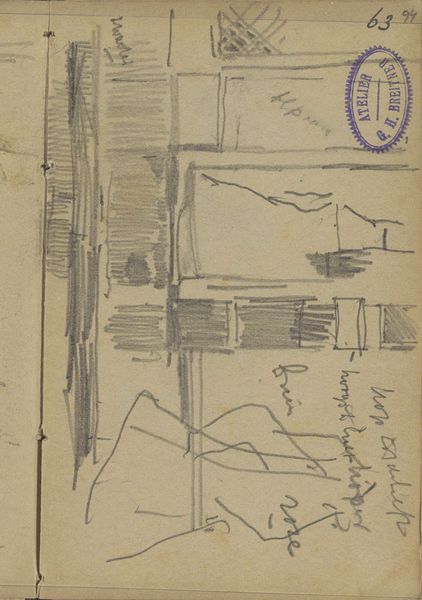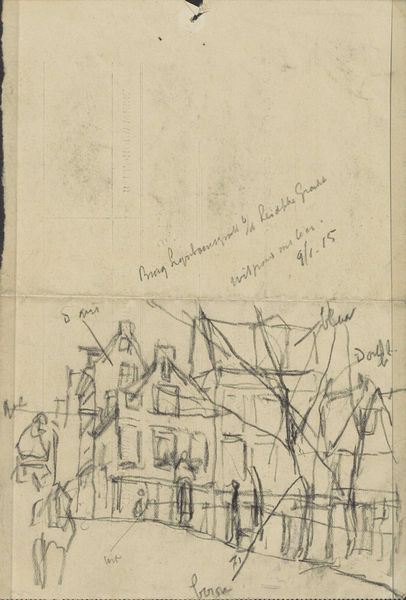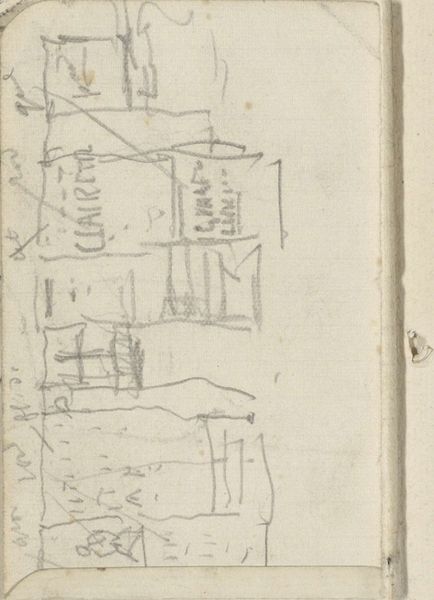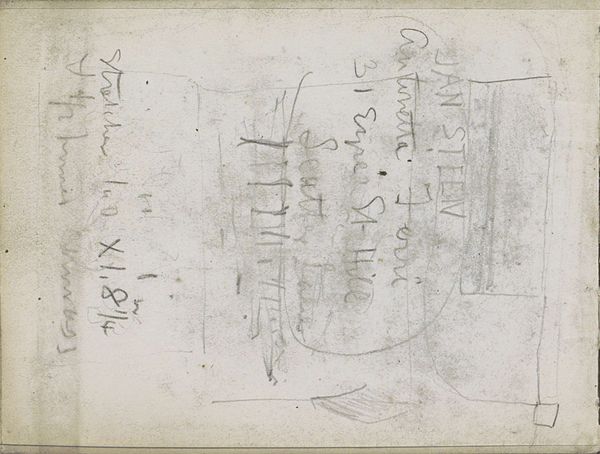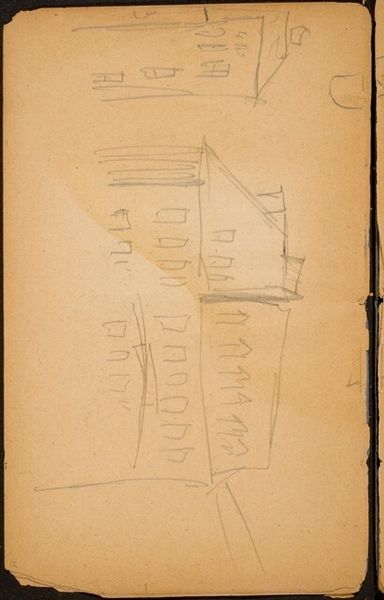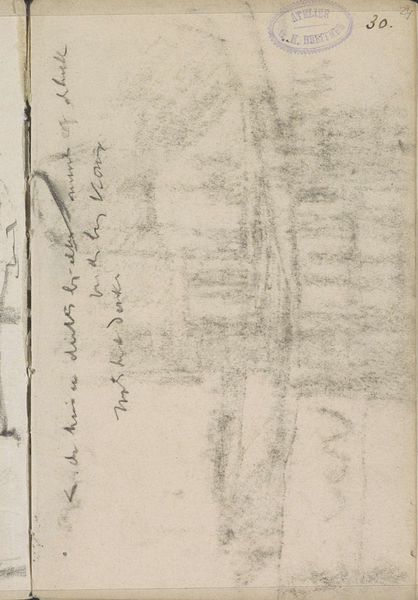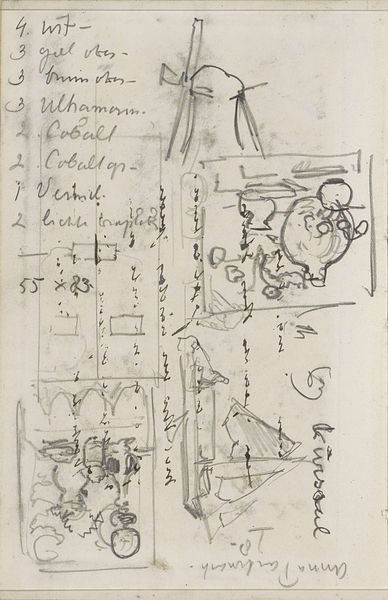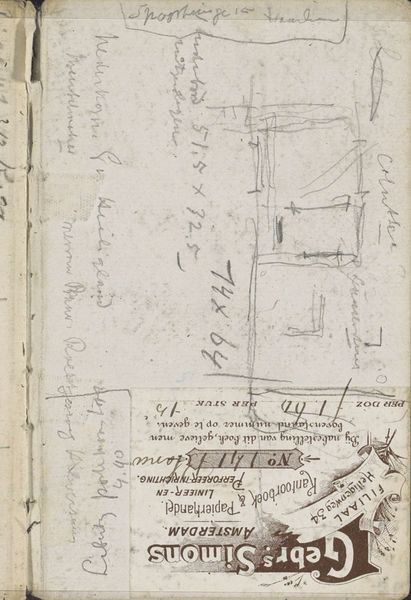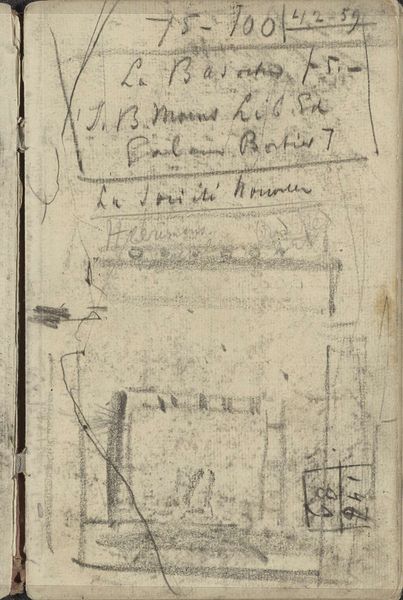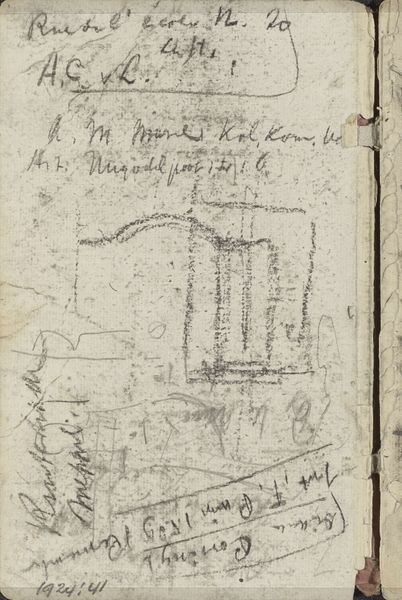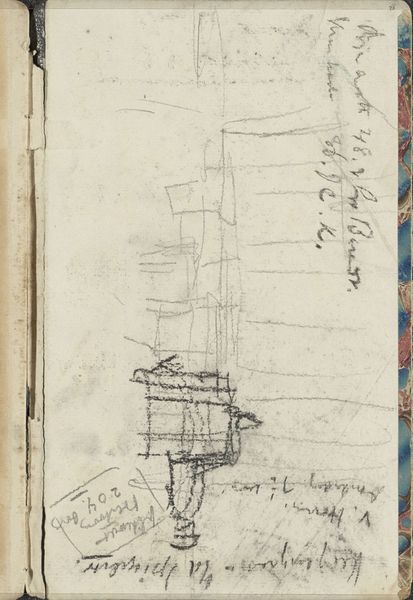
Copyright: Rijks Museum: Open Domain
Curator: This is George Hendrik Breitner's "Gevel aan het Damrak te Amsterdam," a pencil drawing dating back to 1902. Editor: There’s something very raw about this sketch, almost fragile. The hurried lines make me feel like I’m catching a fleeting moment of everyday life in Amsterdam. Curator: Absolutely, and Breitner was fascinated by capturing the pulse of city life. The Damrak, the street depicted, was a bustling hub. This work feels less like a formal portrait of architecture and more like a quick, intimate note. The signs even point to local businesses. Editor: I find it so telling that Breitner chose to use pencil. It's a very accessible, almost democratic material. And the support? Seems to be a page ripped straight out of a sketchbook, right? There’s no pretension, no gilding of the lily, just pure observation documented directly onto the page, as a worker of the modern city itself. Curator: It's interesting you say that. Pencil allows for corrections, and a kind of unvarnished look that suits his style. He embraced realism. We often forget the cultural memory loaded within these everyday buildings, how shopfronts themselves narrate a location’s history, layer upon layer. Editor: Right. I can’t help but think of the craftsman's hand as much as Breitner's artistry. Think of the original builders, laying brick upon brick, sign painters adding their lettering…It's a collective labor frozen in time. Even pencil leads back to industry—graphite mined, processed, then used to transcribe another's architectural designs on paper! Curator: Precisely. A simple drawing can resonate with the echoes of generations. It encourages me to seek out the meanings in the everyday cityscape. Editor: I'm left thinking about what it means to record – not just the what, but the how, who, and why involved in creating even a sketch. Thanks, George.
Comments
No comments
Be the first to comment and join the conversation on the ultimate creative platform.
